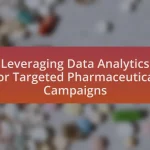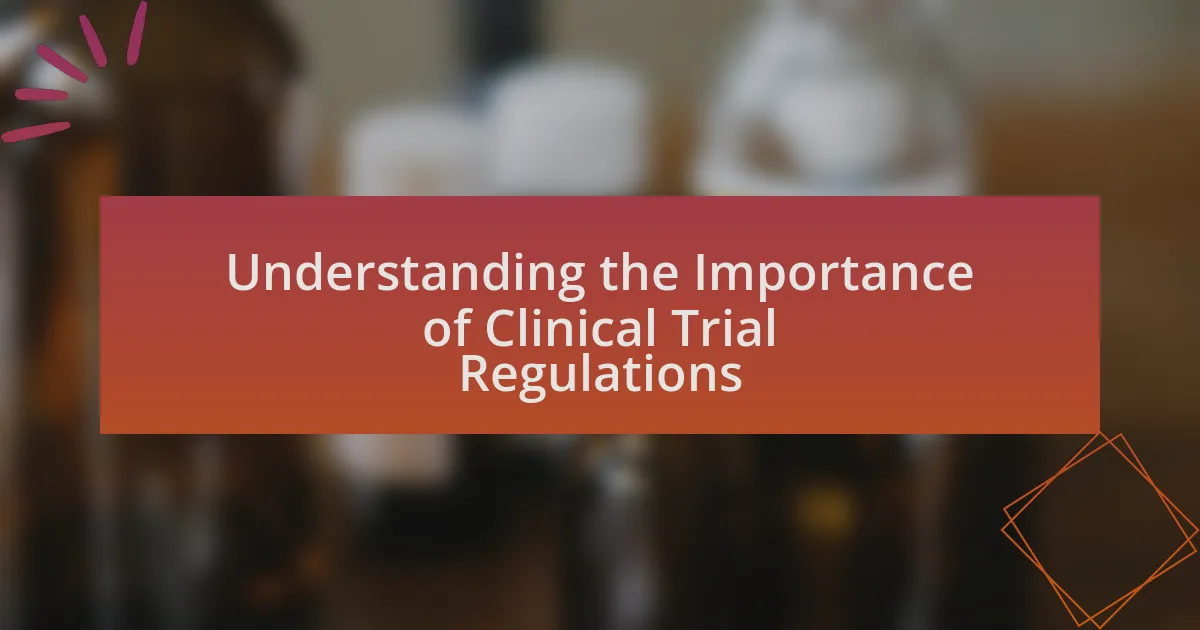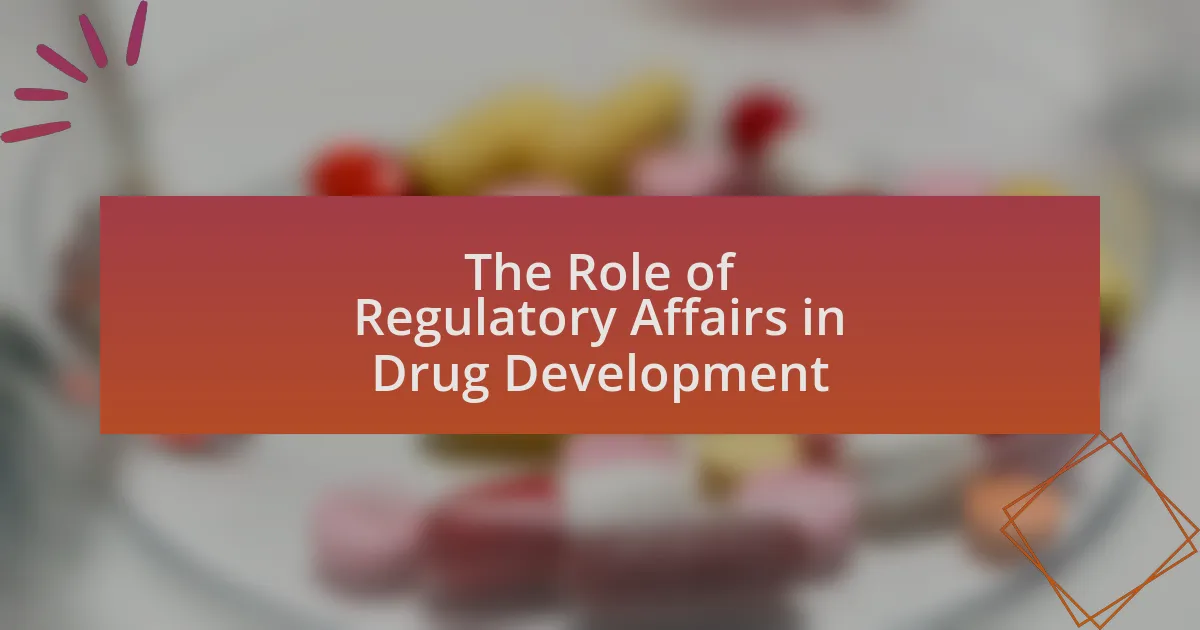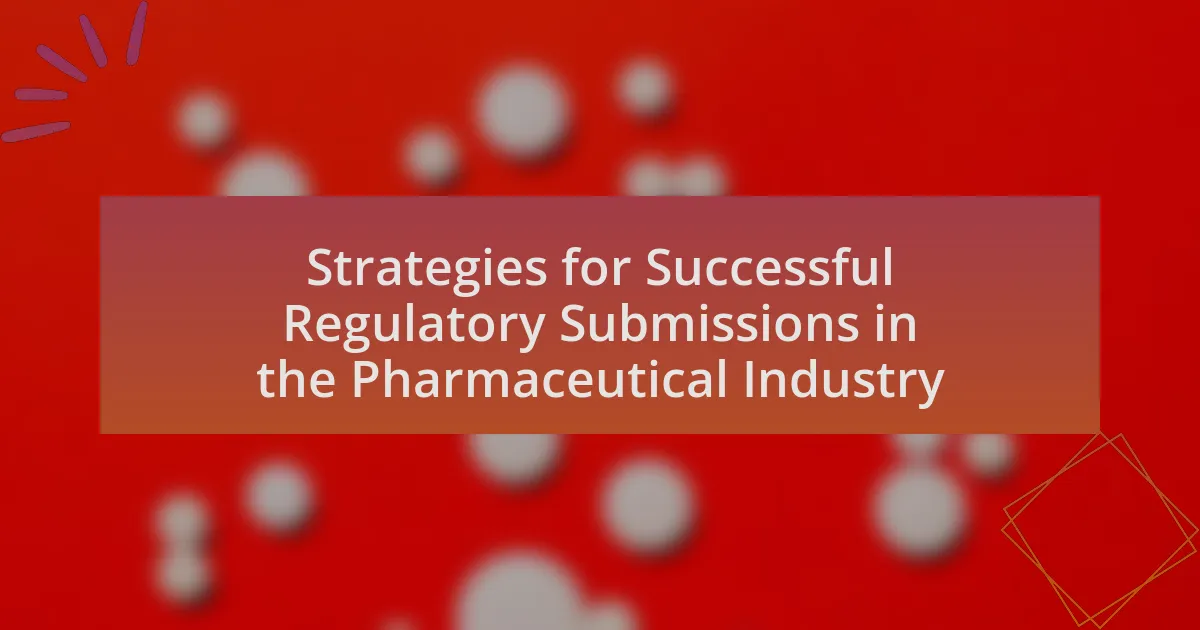Pharmacovigilance is the science dedicated to the detection, assessment, understanding, and prevention of adverse drug effects, playing a crucial role in ensuring patient safety and drug efficacy. This article provides a comprehensive overview of pharmacovigilance, detailing its importance in healthcare, primary goals, key components, and the types of data collected. It also examines the regulatory frameworks governing pharmacovigilance, the roles of various stakeholders, and the challenges faced in the field, including data privacy concerns and underreporting of adverse reactions. Additionally, the article highlights best practices and technological advancements that can enhance pharmacovigilance efforts and improve risk management strategies.
What is Pharmacovigilance?
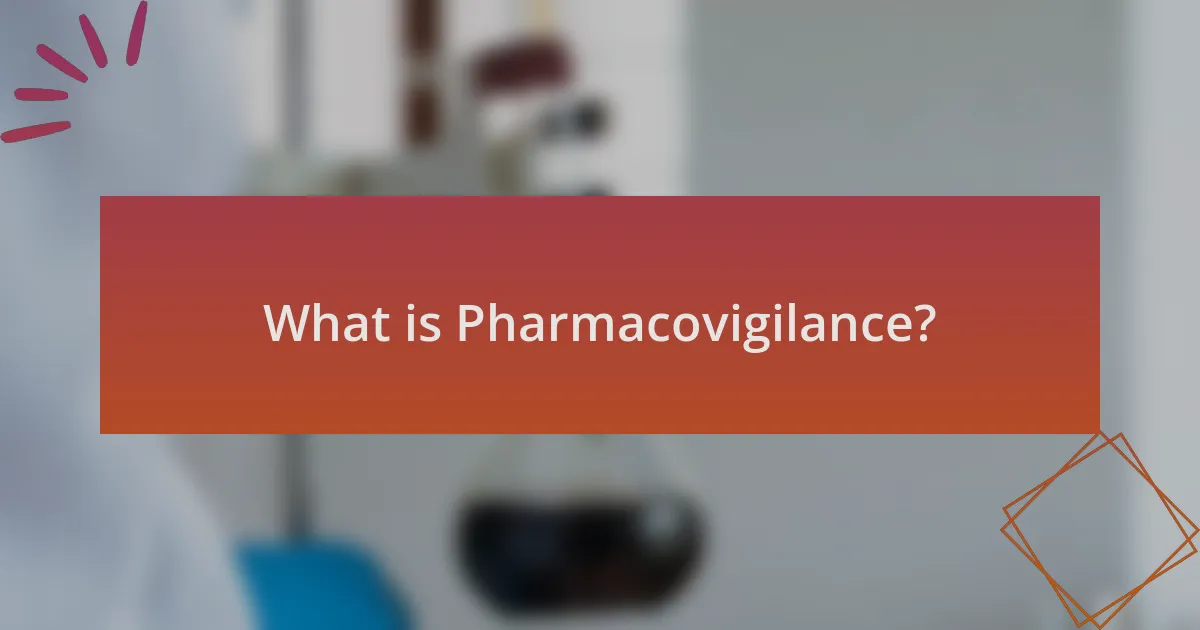
Pharmacovigilance is the science and activities related to the detection, assessment, understanding, and prevention of adverse effects or any other drug-related problems. This field aims to improve patient safety and ensure that the benefits of medications outweigh their risks. The World Health Organization defines pharmacovigilance as a key component of drug safety monitoring, emphasizing its role in identifying potential safety issues that may arise after a drug is marketed.
Why is Pharmacovigilance important in healthcare?
Pharmacovigilance is important in healthcare because it ensures the safety and efficacy of medications by monitoring, assessing, and preventing adverse drug reactions. This systematic approach helps identify potential risks associated with pharmaceutical products, thereby protecting patients and improving public health outcomes. For instance, the World Health Organization reports that effective pharmacovigilance can lead to the identification of previously unknown side effects, which can inform regulatory actions and enhance drug safety protocols.
What are the primary goals of Pharmacovigilance?
The primary goals of Pharmacovigilance are to improve patient safety and ensure the effective use of medicines. This is achieved by monitoring, assessing, and understanding the adverse effects and risks associated with pharmaceutical products. The World Health Organization emphasizes that Pharmacovigilance aims to detect new adverse drug reactions, evaluate their significance, and implement strategies to minimize risks, thereby enhancing the overall safety profile of medications.
How does Pharmacovigilance contribute to patient safety?
Pharmacovigilance contributes to patient safety by systematically monitoring, assessing, and understanding adverse drug reactions and medication errors. This process enables healthcare authorities to identify safety signals, implement risk management strategies, and ensure that the benefits of medications outweigh their risks. For instance, the World Health Organization reported that effective pharmacovigilance systems can lead to a reduction in medication-related harm, thereby enhancing patient safety outcomes.
What are the key components of Pharmacovigilance?
The key components of Pharmacovigilance include the detection, assessment, understanding, and prevention of adverse effects or any other drug-related problems. These components work together to ensure drug safety and efficacy throughout a product’s lifecycle. The World Health Organization emphasizes the importance of these components in maintaining public health by systematically monitoring and evaluating the safety of medicines.
What types of data are collected in Pharmacovigilance?
Pharmacovigilance collects various types of data to monitor the safety of pharmaceutical products. These data types include adverse event reports, which document any undesirable experiences associated with drug use; exposure data, detailing patient demographics and medication usage; and clinical trial data, which provide insights from controlled studies. Additionally, post-marketing surveillance data is gathered to assess long-term drug effects in the general population. This comprehensive data collection is essential for identifying potential safety issues and ensuring regulatory compliance.
How is adverse drug reaction reporting conducted?
Adverse drug reaction reporting is conducted through a systematic process involving healthcare professionals, patients, and regulatory authorities. Healthcare professionals are typically required to report any suspected adverse drug reactions to the relevant regulatory body, such as the FDA in the United States or the EMA in Europe, using standardized forms or electronic reporting systems. Patients can also report adverse reactions directly, often through dedicated websites or hotlines.
The reporting process includes collecting detailed information about the reaction, the drug involved, patient demographics, and any other relevant clinical data. This information is then analyzed to identify potential safety signals, which may lead to further investigation or regulatory action. According to the World Health Organization, effective reporting systems are crucial for monitoring drug safety and ensuring public health.
What are the regulatory frameworks governing Pharmacovigilance?
The regulatory frameworks governing Pharmacovigilance include the International Conference on Harmonisation (ICH) guidelines, the European Medicines Agency (EMA) regulations, and the U.S. Food and Drug Administration (FDA) requirements. ICH guidelines, particularly E2E, provide a standardized approach for monitoring drug safety across member countries. The EMA enforces the Pharmacovigilance legislation established in the EU Directive 2010/84/EU, which mandates risk management and safety reporting for medicinal products. In the U.S., the FDA’s REMS (Risk Evaluation and Mitigation Strategies) and the Adverse Event Reporting System (FAERS) are critical components of the regulatory framework, ensuring that drug safety is continuously assessed post-marketing. These frameworks collectively aim to enhance drug safety and protect public health by establishing clear protocols for reporting, assessing, and managing adverse drug reactions.
Which organizations oversee Pharmacovigilance practices globally?
The organizations that oversee Pharmacovigilance practices globally include the World Health Organization (WHO), the European Medicines Agency (EMA), and the U.S. Food and Drug Administration (FDA). The WHO provides a global framework for monitoring drug safety through its Programme for International Drug Monitoring, which includes over 150 member countries. The EMA is responsible for the scientific evaluation, supervision, and safety monitoring of medicines in the European Union, while the FDA regulates and oversees drug safety in the United States, ensuring that pharmaceutical companies comply with safety reporting requirements. These organizations play crucial roles in establishing guidelines and regulations that ensure the safety and efficacy of medications worldwide.
What are the key regulations that impact Pharmacovigilance?
The key regulations that impact Pharmacovigilance include the European Union’s Pharmacovigilance Directive (2010/84/EU), the FDA’s REMS (Risk Evaluation and Mitigation Strategies), and the ICH E2E guidelines. The EU directive mandates the collection and assessment of adverse drug reactions to ensure drug safety, while the FDA’s REMS program requires specific risk management strategies for certain medications to mitigate risks. The ICH E2E guidelines provide a framework for the harmonization of pharmacovigilance practices across different regions, ensuring consistent safety monitoring. These regulations collectively establish the legal and procedural framework for monitoring drug safety and efficacy post-marketing.
How does Pharmacovigilance operate in practice?
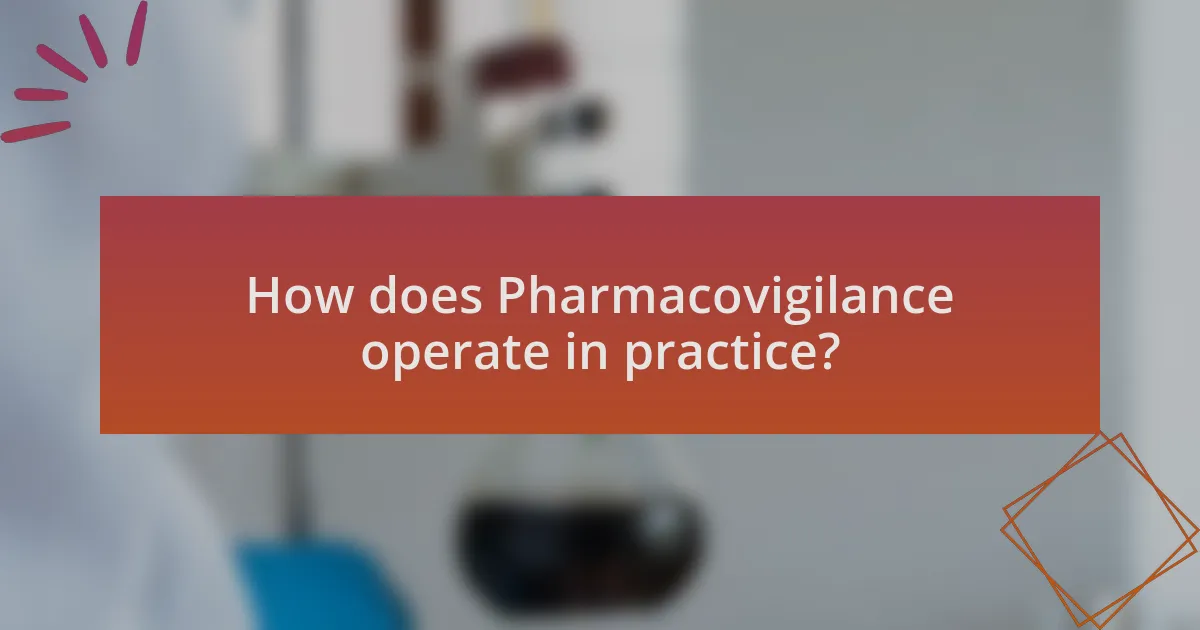
Pharmacovigilance operates in practice by systematically monitoring, assessing, and understanding the safety of pharmaceutical products after they have been approved for use. This process involves collecting data on adverse drug reactions (ADRs) from healthcare professionals, patients, and clinical studies, which is then analyzed to identify potential safety issues. Regulatory authorities, such as the FDA and EMA, require pharmaceutical companies to report these findings and take necessary actions, such as updating product labeling or conducting further studies, to ensure patient safety. The World Health Organization emphasizes the importance of pharmacovigilance in minimizing risks associated with medications, highlighting its role in improving public health outcomes.
What processes are involved in the Pharmacovigilance system?
The processes involved in the Pharmacovigilance system include data collection, data management, signal detection, risk assessment, and risk communication. Data collection involves gathering information on adverse drug reactions from various sources such as healthcare professionals, patients, and clinical trials. Data management entails organizing and analyzing the collected data to ensure accuracy and completeness. Signal detection is the process of identifying potential safety issues through statistical analysis of the data. Risk assessment evaluates the significance of the identified signals, determining the potential impact on public health. Finally, risk communication involves disseminating information about the risks associated with medications to stakeholders, including healthcare providers and patients, to ensure informed decision-making. These processes are essential for monitoring drug safety and ensuring regulatory compliance.
How are signals detected and evaluated in Pharmacovigilance?
Signals in pharmacovigilance are detected through systematic collection and analysis of adverse event reports, which include data from healthcare professionals, patients, and clinical studies. The evaluation process involves statistical methods and data mining techniques to identify patterns or trends that may indicate a potential safety issue with a drug. For instance, the World Health Organization’s VigiBase utilizes algorithms to analyze reports and detect signals, ensuring that any emerging safety concerns are promptly addressed. This structured approach allows for the identification of signals that may warrant further investigation or regulatory action.
What role do healthcare professionals play in Pharmacovigilance?
Healthcare professionals play a crucial role in pharmacovigilance by monitoring, reporting, and analyzing adverse drug reactions and medication errors. Their clinical expertise allows them to identify potential safety issues associated with medications, contributing to the overall assessment of drug safety. For instance, studies indicate that healthcare professionals are often the primary source of spontaneous reports to regulatory authorities, which are essential for detecting signals of drug-related risks. This active participation helps ensure that medications are used safely and effectively, ultimately protecting patient health and informing regulatory decisions.
What challenges does Pharmacovigilance face?
Pharmacovigilance faces several challenges, including underreporting of adverse drug reactions, data management complexities, and regulatory compliance issues. Underreporting is significant, as studies indicate that only 5-10% of adverse events are reported, leading to incomplete safety profiles for medications. Data management complexities arise from the vast amounts of data generated from various sources, making it difficult to analyze and interpret effectively. Additionally, regulatory compliance issues can hinder pharmacovigilance efforts, as organizations must navigate varying regulations across different regions, which can complicate the reporting and monitoring processes.
How do data privacy concerns affect Pharmacovigilance?
Data privacy concerns significantly impact pharmacovigilance by limiting the availability and sharing of patient data necessary for monitoring drug safety. Regulatory frameworks, such as the General Data Protection Regulation (GDPR) in Europe, impose strict guidelines on how personal health information can be collected, stored, and utilized, which can hinder timely reporting and analysis of adverse drug reactions. For instance, the requirement for informed consent may restrict access to historical patient data, thereby affecting the comprehensiveness of safety assessments. Consequently, these privacy regulations can lead to delays in identifying potential safety issues, ultimately compromising patient safety and public health.
What are the limitations of current Pharmacovigilance systems?
Current pharmacovigilance systems face several limitations, including underreporting of adverse drug reactions (ADRs), lack of standardized reporting practices, and challenges in data integration. Underreporting is significant, with studies indicating that only 5-10% of ADRs are reported, leading to incomplete safety profiles for medications. The absence of standardized reporting practices across different regions and institutions complicates data comparison and analysis. Additionally, the integration of diverse data sources, such as electronic health records and social media, remains a challenge, hindering comprehensive safety assessments. These limitations impact the effectiveness of pharmacovigilance in ensuring drug safety and efficacy.
What are the implications of Pharmacovigilance for stakeholders?

Pharmacovigilance has significant implications for stakeholders, including regulatory authorities, healthcare professionals, pharmaceutical companies, and patients. Regulatory authorities rely on pharmacovigilance data to ensure drug safety and efficacy, guiding their decisions on market approvals and post-marketing surveillance. Healthcare professionals utilize this information to make informed prescribing decisions, ultimately enhancing patient safety. Pharmaceutical companies are obligated to monitor and report adverse drug reactions, which can impact their reputation and financial performance. Patients benefit from increased safety measures and transparency regarding medication risks, fostering trust in healthcare systems. The World Health Organization emphasizes that effective pharmacovigilance systems can prevent adverse drug reactions, thereby improving public health outcomes.
How does Pharmacovigilance impact pharmaceutical companies?
Pharmacovigilance significantly impacts pharmaceutical companies by ensuring drug safety and efficacy, which directly influences their reputation and financial performance. Effective pharmacovigilance systems help companies identify and mitigate risks associated with their products, thereby reducing the likelihood of costly recalls, lawsuits, and regulatory penalties. For instance, the implementation of robust pharmacovigilance practices can lead to a 30% reduction in post-market safety issues, as evidenced by data from the World Health Organization. This proactive approach not only enhances patient safety but also fosters trust among healthcare providers and consumers, ultimately supporting the long-term success and sustainability of pharmaceutical companies.
What responsibilities do pharmaceutical companies have in Pharmacovigilance?
Pharmaceutical companies are responsible for monitoring, assessing, and reporting adverse drug reactions as part of their pharmacovigilance obligations. This includes collecting data on the safety and efficacy of their products throughout the product lifecycle, ensuring compliance with regulatory requirements, and implementing risk management strategies. For instance, the International Conference on Harmonisation (ICH) guidelines mandate that companies must establish a pharmacovigilance system to detect and evaluate safety signals, thereby ensuring patient safety and product quality.
How can companies improve their Pharmacovigilance practices?
Companies can improve their Pharmacovigilance practices by implementing advanced data analytics and real-time monitoring systems. These technologies enable the identification of safety signals more efficiently, allowing for timely risk assessment and management. For instance, the use of machine learning algorithms can analyze vast amounts of data from various sources, such as electronic health records and social media, to detect adverse drug reactions. According to a study published in the Journal of Pharmacovigilance, organizations that adopted such technologies reported a 30% increase in the detection of safety signals compared to traditional methods. Additionally, enhancing training programs for staff involved in Pharmacovigilance ensures that they are well-versed in regulatory requirements and best practices, further strengthening the overall effectiveness of the system.
What is the role of regulatory authorities in Pharmacovigilance?
Regulatory authorities play a crucial role in pharmacovigilance by ensuring the safety and efficacy of pharmaceutical products through monitoring, evaluation, and regulation of adverse drug reactions. They establish guidelines and frameworks for reporting and analyzing safety data, which helps in identifying potential risks associated with medications. For instance, the U.S. Food and Drug Administration (FDA) and the European Medicines Agency (EMA) require pharmaceutical companies to submit periodic safety update reports and adverse event data, facilitating ongoing assessment of drug safety profiles. This oversight is essential for protecting public health and ensuring that any necessary actions, such as label changes or product recalls, are implemented promptly based on the safety data collected.
How do regulatory authorities enforce Pharmacovigilance compliance?
Regulatory authorities enforce Pharmacovigilance compliance through a combination of legal frameworks, monitoring systems, and inspections. These authorities, such as the FDA in the United States and the EMA in Europe, establish regulations that require pharmaceutical companies to report adverse drug reactions and maintain comprehensive safety databases. Compliance is monitored through regular audits and inspections of these companies, ensuring adherence to established guidelines. For instance, the FDA can impose penalties, including fines or product recalls, for non-compliance, demonstrating the authority’s commitment to patient safety and effective drug monitoring.
What are the consequences of non-compliance in Pharmacovigilance?
Non-compliance in Pharmacovigilance can lead to severe consequences, including regulatory penalties, increased liability for pharmaceutical companies, and potential harm to patient safety. Regulatory authorities, such as the FDA and EMA, may impose fines, suspend or revoke licenses, and require additional studies or reports if a company fails to adhere to pharmacovigilance regulations. Furthermore, non-compliance can result in reputational damage, loss of market access, and decreased trust from healthcare professionals and patients. These outcomes underscore the critical importance of adhering to pharmacovigilance standards to ensure drug safety and efficacy.
What best practices can enhance Pharmacovigilance efforts?
Implementing a robust data collection system enhances Pharmacovigilance efforts by ensuring comprehensive and accurate reporting of adverse drug reactions. This system should integrate multiple data sources, including clinical trials, post-marketing surveillance, and patient registries, to capture a wide range of safety information. Additionally, employing advanced analytics and machine learning techniques can improve signal detection and risk assessment, allowing for timely identification of potential safety issues. Regular training for healthcare professionals on reporting procedures and the importance of Pharmacovigilance fosters a culture of safety and encourages proactive reporting. Furthermore, establishing clear communication channels between regulatory authorities, healthcare providers, and patients enhances transparency and trust, facilitating better collaboration in monitoring drug safety.
How can technology improve Pharmacovigilance reporting?
Technology can improve Pharmacovigilance reporting by enhancing data collection, analysis, and communication processes. Advanced data analytics tools enable the identification of adverse drug reactions more efficiently by processing large datasets from various sources, such as electronic health records and social media. For instance, machine learning algorithms can detect patterns and predict potential safety issues, leading to quicker responses from regulatory bodies. Additionally, mobile applications facilitate real-time reporting by healthcare professionals and patients, increasing the volume and accuracy of reported incidents. A study published in the Journal of Medical Internet Research highlights that digital platforms can significantly streamline the reporting process, making it more user-friendly and accessible.
What strategies can be implemented for effective risk management in Pharmacovigilance?
Effective risk management in Pharmacovigilance can be implemented through strategies such as proactive risk assessment, continuous monitoring of adverse drug reactions, and the establishment of risk minimization plans. Proactive risk assessment involves identifying potential safety issues early in the drug development process, which allows for timely interventions. Continuous monitoring of adverse drug reactions ensures that any emerging safety signals are promptly addressed, thereby enhancing patient safety. Additionally, risk minimization plans, which may include risk communication strategies and educational initiatives for healthcare professionals and patients, help mitigate identified risks. These strategies are supported by regulatory frameworks, such as the ICH E2E Pharmacovigilance guidelines, which emphasize the importance of systematic risk management in ensuring drug safety.

